A Low Console for Home Theater
Versatile cabinet for today's technology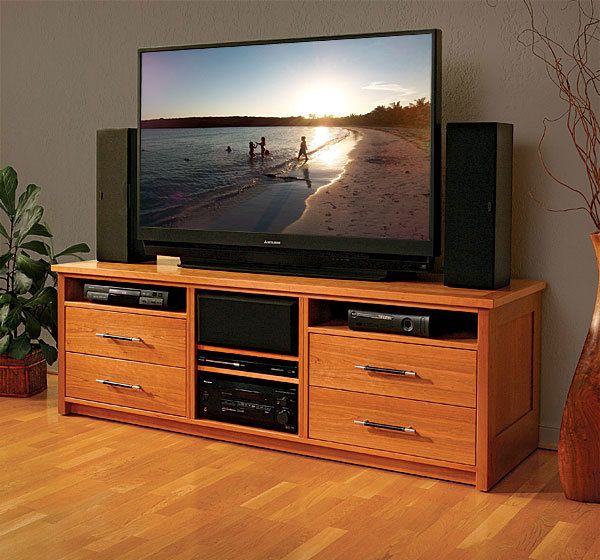
Synopsis: Entertainment centers aren’t what they used to be. Today’s slim televisions and home-theater equipment demand sleek, low consoles that can be adapted to house all manner of media and electronics. Steve Casey, who specializes in such cabinetry, designed this console for a self-contained home-theater system, and it would adapt well to almost any large TV system. While low enough to place the center of most TVs at eye level for a seated viewer, it’s deep enough to house most electronic components and strong enough to support any set. The deep drawers are designed to hold DVDs and VCR tapes, and the back is engineered for ventilation, with plenty of room for cables. Constructed of cherry plywood with biscuit-and-screw joinery, the case has solid-wood edging that elevates the look, and a melamine back and drawer bottoms to add strength and stability.
From Fine Woodworking #200
Just a few years ago, building an entertainment center for a large-screen TV meant designing a case piece big enough to hide an elephant. Today’s slimmer sets can hang on a wall or sit attractively in the open, offering furniture makers new options. Among the most practical is a low console that can house media and electronics. It’s a great way to bring that glorious high-definition picture out of the armoire.
I designed this console for a self-contained small home-theater system built around a 52-in. projection-style TV, but it would work just as well with a slimmer flat-panel model. Visually, it’s tasteful and tame enough to harmonize with quite a few furniture styles, and you can feel free to adapt its style to fit your room. Look below the surface, though, and it becomes clear this piece is media furniture through and through.
At 24 in. tall, the console is still low enough to place the center of most TVs at eye level for a seated viewer. And it’s strong enough to support any set, so you won’t need a tricky wall-mount.
At 22 in. deep, the cabinet will comfortably hold most electronic components. I designed the drawers specifically to house dVds, Vcr tapes, and cds without making the case too tall. The back and shelves are engineered to promote ventilation for the equipment and to simplify cable management. And I put the whole piece on casters so it would be easy to pull away from the wall for system setup, maintenance, or cleaning. Small casters will work on a hardwood floor, but carpet calls for larger ones.
None of those features call attention to themselves. What you see and live with is a nice piece of furniture. The project is a good example of building a sturdy carcase in an efficient way, using sheet goods and techniques I developed and use for building large-scale entertainment center furniture and cabinetry.
Sheet goods make a stable case: One of the greatest challenges in building furniture to house electronic equipment is that the gear generates heat that causes wood movement. So, I always use stable composite material (in this case, two sheets of cherry plywood) for media furniture carcases.
For the full article, download the PDF below:




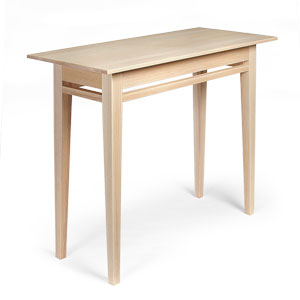
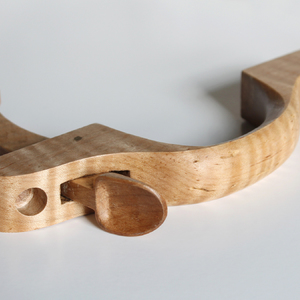






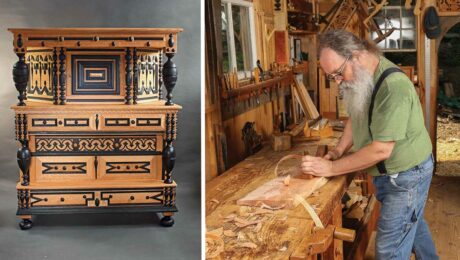
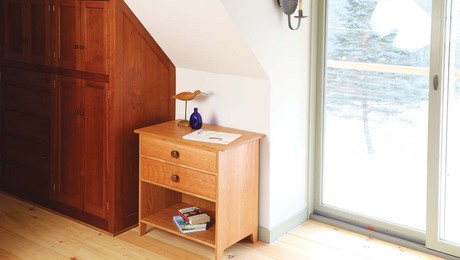








Log in or create an account to post a comment.
Sign up Log in